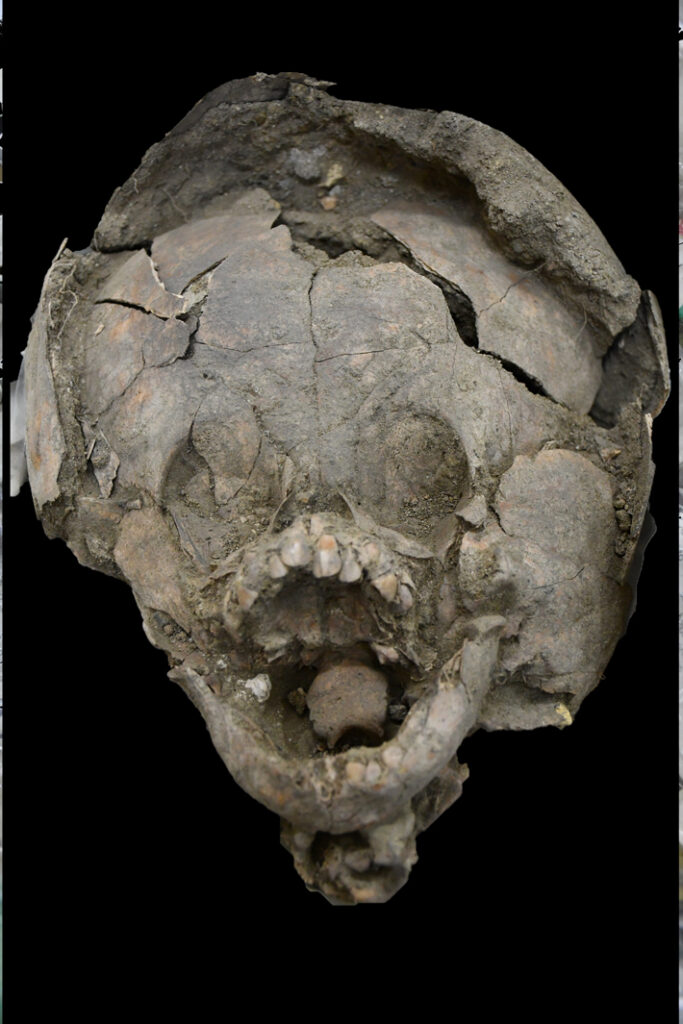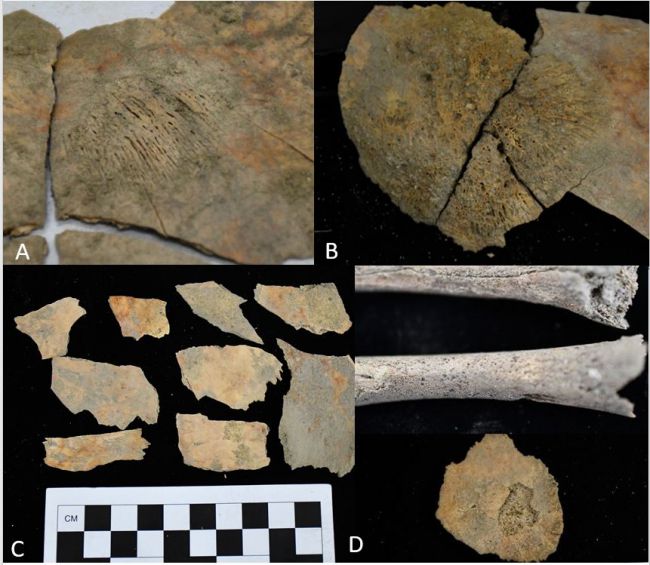Babies Buried Wearing ‘Helmets’ Made of Skulls of Other Children Discovered in Ecuador
While the head of humans is a powerful symbol in many cultures in South America, archeologists at a site in Ecuador were surprised to find that two babies buried with “helmet” made from the skulls of other kids.
The Salango ritual complex on the central coast, dating back to approximately 100BC, was a site used as a funerary platform by a chiefdom culture called Guangala.
During the excavation between 2014 and 2016, 11 individuals buried with small artifacts, shells, and stone ancestor figurines. More notably, two infants were found with the modified skulls of others encasing their heads.

The research team – composed of Sara Juengst and Abigail Bythell of the University of North Carolina at Charlotte and Richard Lunniss and Juan José Ortiz Aguilu of the Universidad Técnica de Manabí in Ecuador – explained this unusual burial ritual in a new article published in the journal Latin American Antiquity.
One burial was that of an infant who was about 18 months old when they died. In describing the image of this burial, Juengst and colleagues note that “the modified cranium of a second juvenile was placed in a helmet-like fashion around the head of the first, such that the primary individual’s face looked through and out of the cranial vault of the second.”
The human skull helmet came from another child between 4-12 years at death. The second infant was only about 6-9 months old at death, with a skull helmet made from a child who was between 2-12 years at death.
In studying both burials, the archaeologists noticed that there was very little space between the primary skeletons and their skull helmets, “suggesting the simultaneous burial of the primary individual and the additional cranium.”
While isolated skulls are often found in South American mortuary contexts, they are typically adults who are victims of war or are idolized ancestors.
Children’s heads are far less commonly found by archaeologists, causing Juengst and colleagues to suggest that this unusual or symbolic form of burial at Salango “may represent an attempt to ensure the protection of these ‘pre-social and wild’ souls.”
Surrounding the infants with stone ancestor figurines may have further empowered the heads, providing protective measures for these prematurely deceased individuals, they write.
“We’re still pretty shocked by the find,” “Not only is it unprecedented, but there are also still so many questions.” She is hoping that in-progress DNA and isotope analyses will contribute new information to understanding who the children were and whether they were related to the individuals who became their skull helmets.
Juengst says that there are “various possibilities for the origin of the extra crania, from potentially curated ancestor skulls to them being worn in life as well as in death, so we definitely have a lot of ideas to work with.”
Bioarchaeologist Sara Becker of the University of California Riverside calls this burial practice “pretty amazing – I’ve never heard of anything like it elsewhere in the Andes.”
In considering Juengst and colleagues’ findings, Becker suggests that it “makes me consider practices elsewhere where heads are buried in chests as if they are ‘seeds’ to help with agricultural productivity. I do wonder if it has something to do with rebirth, and if these children could have been important symbols of that.”
Sîan Halcrow of the University of Otago, an expert on ancient burials of children, also finds this new research study fascinating for its implications for the study of evidence of disease on children’s bodies.
Halcrow points out that Juengst and colleagues discovered evidence of anemia on the bones of both the two primary infants as well as the individuals who were used as helmets.

While “the authors state that this finding is unusual for the area and time period,” Halcrow thinks “this is likely due to the previous lack of interest of the study of infant disease in the region and development of new methods for identifying disease in this age group.” Further analysis of children’s skeletons is an ongoing research theme in the bioarchaeology of South America.
This unique Ecuadorian mortuary practice may seem strange, even within the context of ancient Andean cultures replete with the imagery and manipulation of heads, because of the young age of all of the children involved.
“Dealing with the death of young infants is always emotional,” Juengst concludes, “but in this case, it was strangely comforting that those who buried them took extra time and care to do it in a special place, perhaps accompanied by special people, in order to honor them.”





